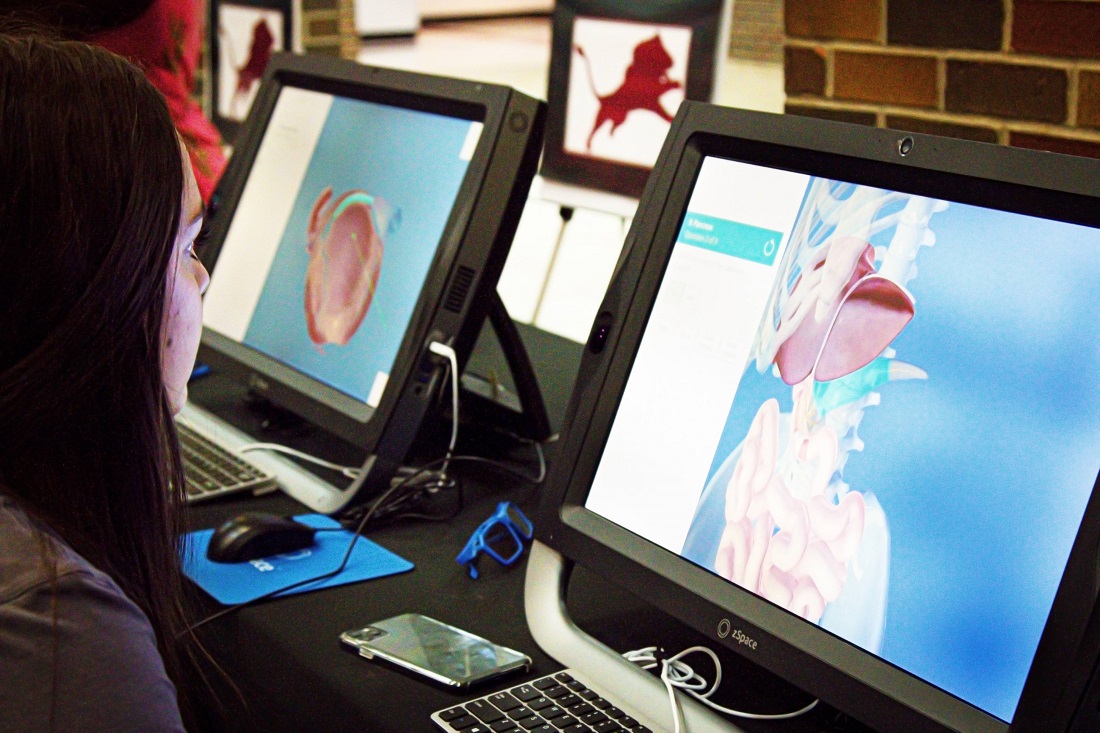
Above: The ZSpace system on display at the BHS Business Industry Trade Showcase in February.
“Students learn by trying and doing,” the ZSpace homepage narrates. “Students can try and do without fear of breaking materials, spilling chemicals, making a wrong incision, or blowing up a circuit.” Learning through artificial reality (AR) or virtual reality (VR) experiences is the main idea behind ZSpace applications. ZSpace functions like a typical desktop computer and combines with the use of lightweight glasses and a stylus to create a three-dimensional experience for the student. The ZSpace software application tracks the user’s eyewear and tells the system in real time how to illustrate the object on the screen like a real, tangible object in front of the user. ZSpace software also tracks the stylus, enabling the user to interact with objects projected in the screen. Users can move around and dissect the object before them. ZSpace provides learning experiences for kindergarten through twelfth grade, health-science and medical processes, agri-science, transportation, and advanced manufacturing and skilled trades.
Brownwood High School Health Science Technology Teacher, Annalyn Deen, has been incorporating this advanced training into her classroom after receiving a grant from the Brownwood Education Foundation in 2019. She incorporates the Anatomy program on the computer to help students learn. “The students use it to conceptualize the different body systems,” Deen said. The human anatomy parts, “literally jump off the screen. This greatly increases their understanding of the body system being studied.” Students can see the models in front of the screen and explore all the dimensions of the elements they are studying. This takes the idea of ‘pen and paper’ to ‘tactile object’ for the student. Tabletop virtual reality is transforming education today, and BHS leads the way in innovative education technology.
The Brownwood Education Foundation (BEF) provides grants to teachers so they may incorporate advanced STEM (science, technology, engineering, math) initiatives into BHS classrooms. STEM projects engage students’ senses, creativity, and tactile learning practices, which makes learning process more memorable and fascinating to students. The BEF 50×1000 fundraiser provides funds directly to STEM initiatives in Brownwood classrooms. To be a part of this crucial community effort, where 1,000 people each donate $50, visit http://supportbisd.com/50×1000.

